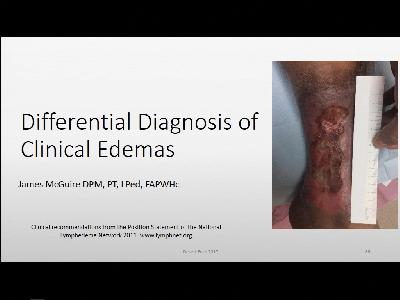
Practice Perfect 659
The New Enhanced Recovery After Surgery Protocol Part 1: What is it?
The New Enhanced Recovery After Surgery Protocol Part 1: What is it?

I find it very interesting that pain, the primary symptom that brings patients to doctors, is also a very difficult entity to deal with in the postoperative period. We spend so much effort trying to keep our patients comfortable after surgery and yet, in the past, we had a very difficult time making that goal a reality. All medical providers are well aware that opioid pain medications are highly problematic, and there is an ongoing search to find new methods to deal with postoperative pain.
A few weeks back I was talking to a couple of podiatric friends about a relatively new method of pain control called Enhanced Recovery After Surgery, or ERAS. Some of you reading this will know exactly of what I speak, and it’s likely that others will – like me – have never heard of ERAS. I was blown away when my friends told me that they were doing larger procedures as an outpatient that I would normally have admitted after the surgery. These were procedures such as complex ankle fracture repairs and ankle fusions.
Yes, friends, these patients are being sent home during the same day. And even more to the point, a number of their patients only need minimal opioid medications! I was duly impressed, and I had to find out more about ERAS. Let’s explore this topic a little and see what ERAS has to offer our surgical patients.
What is ERAS?
According to Ljungqvist and colleagues, ERAS is a “multimodal, multidisciplinary approach to the care of the surgical patient“ with the aim to “minimize stress and improve the response to stress”1. This is essentially a series of practices that when used together and in sequence, lead to decreased pain and improved function. There are specific actions that take place during the preadmission, preoperative, intraoperative, and postoperative periods aimed specifically at decreasing pain but also improving the function of various aspects of patient physiology. One important aspect to note is that this system appears to have been originally created for general surgery, specifically bowel resection procedures. As a result, the protocols may not totally translate to podiatry.
ERAS is a group of strategies designed to decrease pain and improved function after surgery
In today’s Practice Perfect we’ll examine aspects of ERAS protocols to understand what occurs during this process. Next week, we’ll take a quick look at the evidence to see how effective this method is. As you read through the protocols, note that some of the processes diverge strongly from common perioperative methods.
Some of the processes diverge strongly from common perioperative methods
Let’s get to it!
Preadmission Protocols1,2
- Smoking and alcohol cessation
- Nutrition screening and support
- Medical optimization of chronic disease
Preoperative
- Structured preoperative information given to patient and family.
- Preoperative carbohydrate dose. Clear carbohydrate drinks up to two hours preop and then NPO. Patients are also NPO for solids eight hours before surgery (rather than the standard NPO after midnight). This attenuates postop insulin resistance and reduces protein loss.
- Thrombosis prophylaxis
- Infection prophylaxis
- Nausea prophylaxis. A common method is to use the APFEL score and prescribe multiple medications accordingly (see below).
- Preoperative dosing with Celebrex® 400mg one hour preop + gabapentin 600mg or 1200mg (or pregabalin 150mg or 300mg) one hour preop.
Intraoperative
- Minimally invasive techniques
- Standardized anesthesia, including regional blockade. Avoid long-acting opioids. This is particularly helpful for podiatry since the popliteal and saphenous blocks are so effective in maintaining postoperative pain reduction.
- Maintain fluid balance and support blood pressure with vasopressors once euvolemia is achieved.
- Restrictive use of drains – allows earlier mobilization when drains are removed early.
- Control of body temperature with air flow blankets and warmed IV fluids.
Postoperative
- Early mobilization
- Early intake of oral fluids and solids
- Early removal of catheters and IV fluids
- Use of chewing gums and laxatives
- Protein nutrition supplements
- Multimodal approach to opioid-sparing pain control. One recommendation is to use combinations of the following: NSAIDs, gabapentin or pregabalin, celecoxib, ketorolac, acetaminophen, IV ketamine, and/or opioids.
- Multimodal approach to nausea and vomiting
- Avoidance of unnecessary delays in discharge
- Audit the process with the multidisciplinary team
For those interested in learning more, there is an international society dedicated to ERAS (www.erassociety.org). The website contains a series of evidence-based guidelines for a variety of procedures. Unfortunately, the guidelines for orthopedic surgery is currently sparse and under study with certain guidelines pending publication. And, as is typically the case, there are no guidelines specific to podiatric surgery. Despite this, there are a lot of practices that transcend one procedure or specialty, which makes ERAS applicable across the surgical realm.
*For your reference, the APFEL score for postoperative nausea/vomiting and recommendations for specific prophylactic medications.3
| Risk Factor | Points |
| Postop Opioids | 1 |
| Nonsmoker | 1 |
| Female | 1 |
| History of postop nausea or vomiting/ motion sickness | 1 |
| Risk score = sum of risk factors | 0-4 |
| Risk Score | Prevalence PONV | Prophylaxis: No of Anti-emetics | Examples* |
| 0 | 9% | 0-1 | ± Ondansetron 4 mg |
| 1 | 20% | 1 | Ondansetron 4 mg ± Dexamethasone 4mg |
| 2 | 39% | 2 | Ondansetron 4 mg +Dexamethasone 4mg ± Propofol infusion |
| 3 | 60% | 3 | Ondansetron 4 mg + Dexamethasone 4 mg + Propofol infusion ± Scopolamine patch |
| 4 | 78% | 4 | Ondansetron 4 mg + Dexamethasone 4 mg + Propofol infusion + Scopolamine patch |

-
Ljungqvist O, Scott M, Fearon KC. Enhanced Recovery After Surgery: A Review. JAMA Surg. 2017 Mar 1;152(3):292-298.
Follow this link -
Chou R, Gordon DB, de Leon-Casasola OA, et al. Management of Postoperative Pain: A Clinical Practice Guideline. J Pain. 2016 Feb;17(2):131-157.
Follow this link -
PONV Prophylaxis Guidelines. Ether: Resources for Anesthesia Research and Education. Stanford Medicine. http://ether.stanford.edu/policies/PONV_prophylaxis_guidelines.html. Published 1/30/14. Last accessed 6/11/19.
Follow this link

































Comments
There are 0 comments for this article